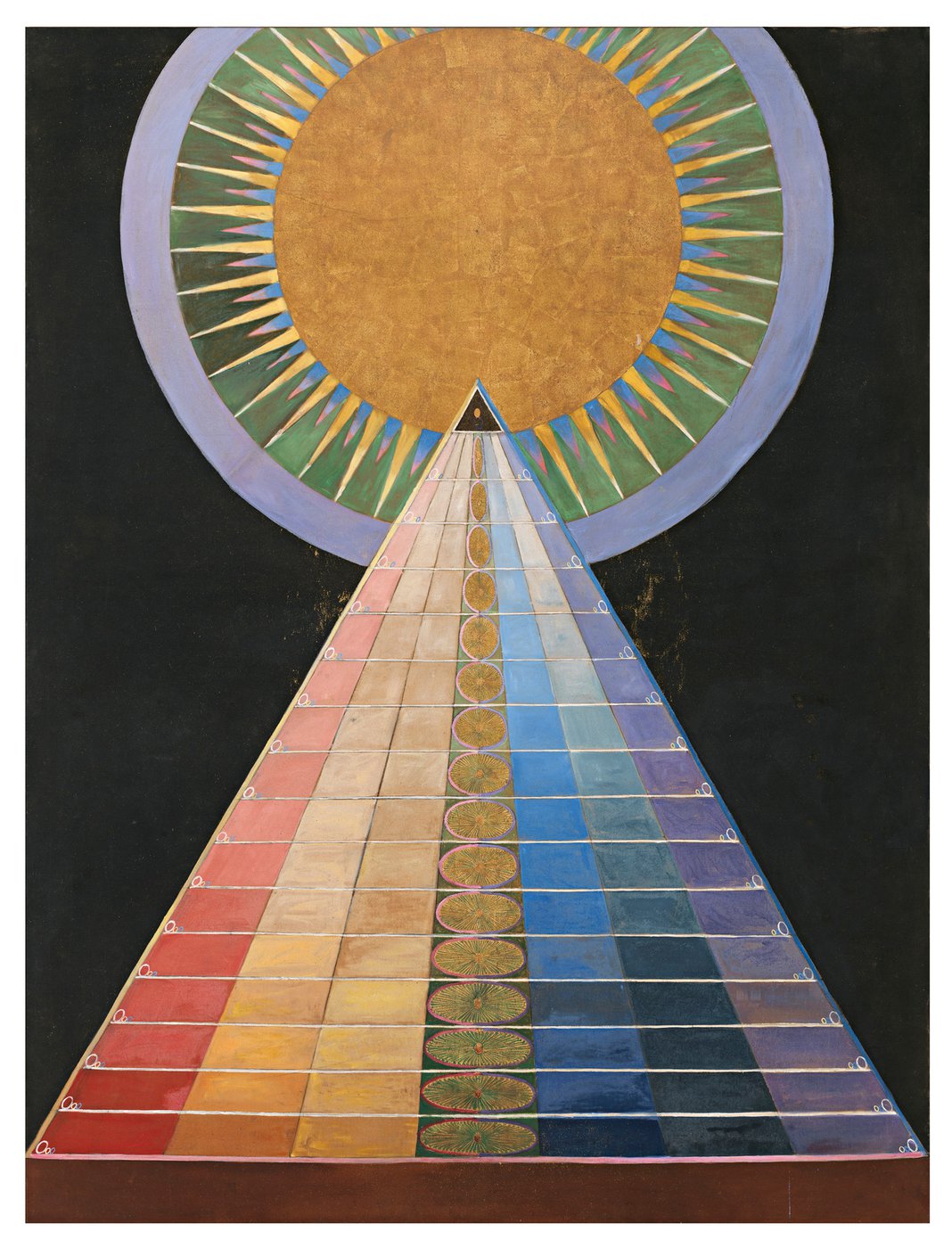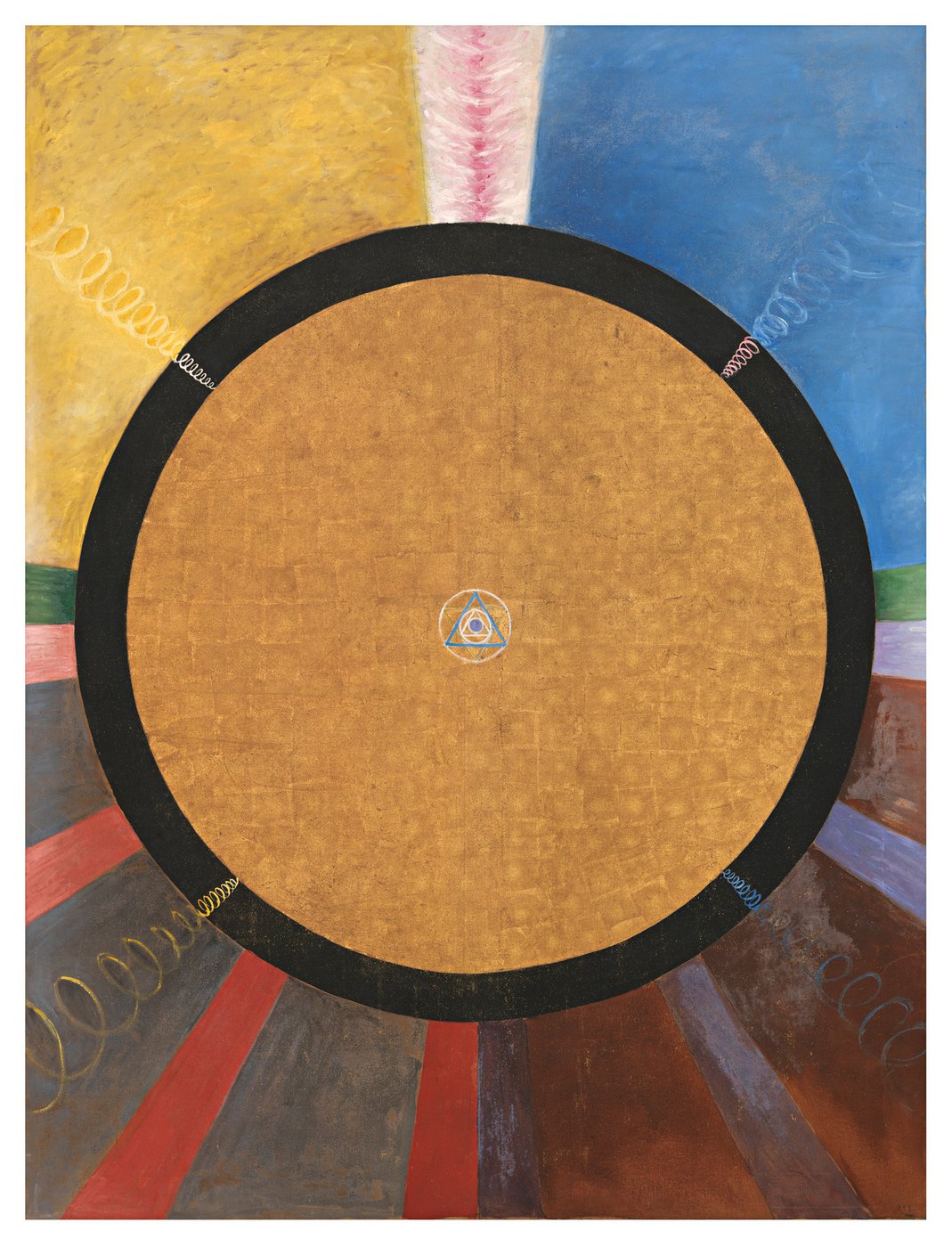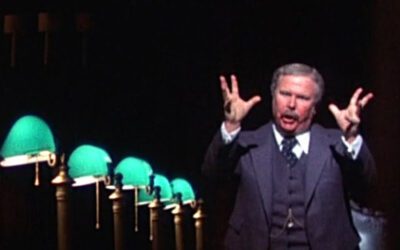Hilma af Klint: A Visionary Artist Who Pioneered Abstract Art
Hilma af Klint (1862-1944) was a Swedish artist and mystic whose pioneering abstract paintings predated the work of Vasily Kandinsky and other modernist artists by several years. Born in Stockholm, af Klint studied at the Royal Academy of Fine Arts, where she developed her skills in traditional painting and portraiture. However, her true artistic breakthrough came after she embraced spirituality and began exploring the unseen realms of existence through her art.
Hilma Af Klint Biography
Early Life and Artistic Training
Hilma af Klint was born on October 26, 1862, in Stockholm, Sweden. She grew up in a wealthy family and showed an early aptitude for art. In 1882, she enrolled at the Royal Academy of Fine Arts in Stockholm, where she studied painting and drawing. During her time at the academy, af Klint excelled in traditional genres such as portraiture and landscape painting, and graduated with honors in 1887.
After completing her studies, af Klint established herself as a professional artist in Stockholm. She took commissions for portraits and landscapes, and exhibited her work in several group shows. However, despite her success in conventional artistic circles, af Klint felt a growing dissatisfaction with the limitations of representational art.
Spiritual Awakening and the Influence of Theosophy
In the late 1880s, af Klint began to explore spirituality and esoteric philosophies, particularly Theosophy. Founded by Helena Blavatsky, Theosophy sought to unite the wisdom of Eastern and Western spiritual traditions, revealing a hidden knowledge of the divine that could guide humanity’s spiritual evolution.
Af Klint was deeply influenced by Theosophical concepts such as the astral plane, an intermediary realm between the physical and spiritual worlds. She also studied the writings of Annie Besant and Charles Webster Leadbeater, who described the astral plane as a world of luminous colors and fluid forms.
In 1896, af Klint and four other women formed a spiritual group called “The Five” (De Fem). The group met regularly to conduct séances and experiments in automatic writing and drawing. Through these practices, af Klint believed she was receiving messages and images from higher spiritual beings, which she referred to as “The High Masters.”
The Birth of Abstract Art: Paintings for the Temple
In 1906, at the age of 44, af Klint received a commission from the High Masters to create a series of paintings for a spiral temple. This project, which she called “Paintings for the Temple,” would occupy her for the next nine years and result in 193 works of art.
The Paintings for the Temple mark a radical departure from af Klint’s earlier, representational work. They are characterized by bold, abstract compositions of geometric shapes, spirals, and organic forms, rendered in bright, luminous colors. The paintings are divided into several sub-series, each exploring different aspects of spiritual evolution and the theosophical cosmology.
One of the most striking sub-series is “The Ten Largest,” a group of monumental canvases measuring over 10 feet tall. Created in 1907, these paintings depict the stages of life, from childhood to old age, through a symbolic language of colors and forms. The dynamic, swirling compositions seem to vibrate with spiritual energy, inviting the viewer to enter a state of higher consciousness.
Throughout the Paintings for the Temple, af Klint employs a complex system of symbols and color correspondences drawn from Theosophy and other esoteric traditions. The spiral, for example, represents the evolutionary journey of the soul, while the colors blue and yellow symbolize male and female principles, respectively.
Af Klint’s abstract language also incorporates letters and words, often drawn from the Sanskrit alphabet, which allude to sacred sounds and the creative power of the logos. By combining these various elements, af Klint sought to create a universal language of spiritual truth that could transcend the boundaries of culture and religion.
Hilma af Klint’s Relevance to Jungian Psychology and the Individuation Process:
From a Jungian perspective, af Klint’s artistic and spiritual journey can be seen as a profound engagement with the process of individuation and the exploration of the collective unconscious. Her automatic drawings and abstract paintings, created in dialogue with the numinous dimensions of the psyche, anticipate Jung’s concept of active imagination and his understanding of the archetypal realm.
Af Klint’s work, with its rich symbolism and complex metaphysical themes, can be seen as a visual representation of the individuation process itself. Her paintings, such as “The Ten Largest,” “The Swan,” and “The Dove,” depict the stages of spiritual growth and the integration of opposites, central themes in Jungian psychology. The spiral, a recurring motif in her work, symbolizes the evolutionary journey of the soul and the process of psychic transformation.
Moreover, af Klint’s engagement with Theosophy and Anthroposophy, with their emphasis on the unity of matter and spirit and the evolution of consciousness, resonates with Jung’s understanding of the Self as the archetype of wholeness and the goal of the individuation process. Her paintings can be seen as a map of the psyche, charting the journey from the personal to the transpersonal, from the ego to the Self.
In this sense, af Klint’s work is not only a pioneering contribution to the history of abstract art but also a profound exploration of the depths of the human psyche and the mysteries of the soul. Her visionary paintings offer a glimpse into the numinous dimensions of existence and the archetypal patterns that shape our inner and outer worlds.
For contemporary Jungian thinkers and practitioners, af Klint’s legacy serves as a powerful reminder of the transformative potential of creative expression and the importance of engaging with the unconscious in the pursuit of wholeness and self-realization. Her work invites us to embark on our own journey of individuation, to confront the shadows and mysteries within, and to give form to the ineffable dimensions of the Self.
From the perspective of Robert Moore’s archetypal psychology, af Klint’s artistic journey can be seen as a powerful example of the integration of the feminine archetypes. Her work embodies the visionary wisdom of the Wise Woman, the nurturing and transformative power of the Mother, and the passionate creativity of the Lover. By giving form to these archetypal energies, af Klint not only pioneered a new language of abstract art but also modeled a path of feminine individuation and self-realization.
Moreover, af Klint’s collaborative approach to artistic and spiritual exploration, exemplified by her work with “The Five,” reflects Moore’s emphasis on the importance of relational and collective processes in psychological growth and transformation. Her engagement with the unconscious was not a solitary quest but a shared journey, grounded in the power of ritual, community, and the sacred feminine.
Rediscovery and Legacy
Despite the groundbreaking nature of her work, af Klint received little recognition during her lifetime. In 1908, she met with Rudolf Steiner, the founder of Anthroposophy, who admired her paintings but also suggested that the world was not yet ready for them. Following Steiner’s advice, af Klint stipulated that her abstract works should not be exhibited until 20 years after her death.
As a result, af Klint’s pioneering role in the development of abstract art remained largely unknown until the late 20th century. It wasn’t until 1986, more than 40 years after her death, that her work was first exhibited at the Los Angeles County Museum of Art.
Since then, af Klint’s paintings have been shown in major exhibitions around the world, including the Guggenheim Museum in New York, the Serpentine Gallery in London, and the Moderna Museet in Stockholm. Her work has been hailed as a revelation, challenging the conventional narrative of abstract art and prompting a reassessment of her place in the history of modernism.
Today, af Klint is widely recognized as a visionary artist whose work anticipates the abstract compositions of Kandinsky, Malevich, and Mondrian by several years. Her paintings are celebrated for their spiritual depth, symbolic complexity, and innovative use of color and form.
But af Klint’s legacy extends beyond her role as a pioneer of abstraction. Her work is also a testament to the enduring human quest for spiritual knowledge and transcendence, and to the power of art to give form to the ineffable dimensions of existence.
As Julia Voss, one of af Klint’s biographers, notes: “Hilma af Klint’s work is a bridge between the visible and invisible worlds, the scientific and the spiritual, the personal and the universal. Her paintings remind us that the history of abstraction is not a simple, linear progression, but a complex web of influences and inspirations, shaped by the spiritual and philosophical currents of the time.”
In an age of increasing spiritual and ecological crisis, af Klint’s message of interconnectedness and the unity of all life seems more relevant than ever. Her paintings invite us to expand our understanding of what art can be, and to embrace the mystery and wonder of the unseen world that surrounds us.
As we continue to uncover the depths of af Klint’s extraordinary vision, we are reminded of the transformative power of art to bridge the gulf between matter and spirit, and to awaken us to the divine spark that animates all of existence. In the words of the artist herself, “The pictures were painted directly through me, without any preliminary drawings and with great force. I had no idea what the paintings were supposed to depict; nevertheless, I worked swiftly and surely, without changing a single brush stroke.”
Timeline of Hilma Af Klint’s Life
Bibliography:
- Almqvist, K., & Belfrage, L. (2015). Hilma af Klint: Seeing is Believing. Koenig Books. This comprehensive exhibition catalog provides an in-depth look at af Klint’s life and work, with essays that explore her spiritual and artistic journey from a variety of perspectives, including Jungian psychology.
- Fant, Å. (1989). Hilma af Klint: Ockult målarinna och abstrakt pionjär. Raster Förlag. One of the earliest books on af Klint, this Swedish-language biography offers insight into the artist’s life and the esoteric influences that shaped her work, including her engagement with Anthroposophy and Theosophy.
- Henderson, C. (2018). Hilma af Klint: Paintings for the Future. Guggenheim Museum Publications. This beautifully illustrated catalog, published in conjunction with af Klint’s landmark exhibition at the Guggenheim Museum in New York, features essays by leading scholars that situate her work within the context of modernism, spirituality, and depth psychology.
- Jung, C. G. (1968). Psychology and Alchemy. Princeton University Press. In this seminal work, Jung explores the symbolic and archetypal dimensions of alchemy, which he sees as a metaphor for the process of individuation. Af Klint’s abstract compositions, with their geometric forms and luminous colors, bear a striking resemblance to the alchemical imagery that Jung describes.
- Jung, C. G. (1964). Man and His Symbols. Dell Publishing. This classic introduction to Jungian psychology, written by Jung and his associates, provides a clear and accessible overview of key concepts such as the collective unconscious, archetypes, and the individuation process. Af Klint’s paintings can be seen as a visual exploration of these same themes, giving form to the archetypal patterns that structure the psyche.
- Lamas, R. T., & Reuterswärd, P. (2018). Hilma af Klint: Visionary. Bokförlaget Stolpe. This book offers a comprehensive overview of af Klint’s life and work, with a particular focus on her visionary experiences and the spiritual dimensions of her artistic practice. The authors draw on Jungian concepts to illuminate the symbolic and archetypal content of af Klint’s paintings.
- Müller-Westermann, I., & Widoff, J. (2013). Hilma af Klint: A Pioneer of Abstraction. Hatje Cantz. This exhibition catalog, published in conjunction with a major retrospective of af Klint’s work at the Moderna Museet in Stockholm, features essays by leading scholars that explore the artist’s pioneering role in the development of abstract art and her engagement with esoteric and spiritual traditions.
- Ringbom, S. (1986). “Art in ‘The Epoch of the Great Spiritual’: Occult Elements in the Early Theory of Abstract Painting.” Journal of the Warburg and Courtauld Institutes, 49, 386-418. In this influential article, Ringbom explores the esoteric and spiritual roots of abstract art, with a particular focus on the role of Theosophy and other occult movements in shaping the theories and practices of early modernist artists, including af Klint.
- Voss, J. (2020). Hilma af Klint: Paintings for the Future. New York: Guggenheim Museum Publications. This catalog, which accompanied the Guggenheim’s exhibition of af Klint’s work, includes essays by scholars who explore the artist’s groundbreaking abstractions in relation to a variety of themes, including spirituality, science, and depth psychology. The book situates af Klint’s work within the broader context of modernism and the history of abstract art.
- Zander, H. (2019). “Hilma af Klint and the Art of the Unconscious.” Jung Journal, 13(3), 46-59. In this article, Zander examines af Klint’s paintings through the lens of Jungian psychology, arguing that her abstract compositions can be seen as a visual exploration of the collective unconscious and the archetypal dimensions of the psyche. Zander draws on Jung’s concepts of the anima, the self, and the individuation process to illuminate the symbolic and transformative power of af Klint’s work.
Digital, Media, and Cultural Theorists and Philosophers
Bernays and The Psychology of Advertising
John B Calhoun and Universe 25
Claude Shannon and Warren Weaver





























0 Comments